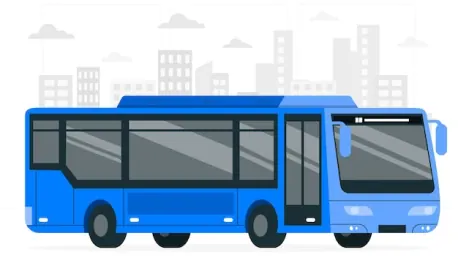The Department of Transportation (DOT) has launched an initiative to gather feedback from truckers, trade organizations, and small businesses on ways to streamline transportation regulations, aligning with recent executive orders that aim to reduce regulatory burdens and cut costs. This effort underscores the commitment to ensure regulations are lawful, prudent, and fiscally responsible, while balancing the need for public safety and operational efficiency within the transportation sector. Understanding the impact of these regulations is crucial for the effectiveness and sustainability of U.S. transportation infrastructure.
Assessing Current Regulations
The primary focus of the DOT’s initiative is to identify regulations that are considered illogical, outdated, or overly burdensome. The agency is particularly interested in understanding which specific rules are no longer serving their intended purpose or have become impractical due to changes in technology and industry practices. The insights gained from stakeholders are critical to shaping a regulatory framework that is not only modern but also tailored to the current needs of the industry and society.
Feedback on data collection practices is also a significant aspect of the DOT’s initiative. It is essential to determine if the current methods for gathering data are effective or if they could be enhanced to provide more accurate and useful information for regulatory decisions. Inefficient data collection can lead to unnecessary costs and impair the ability to make well-informed policy decisions. Stakeholder feedback will help ensure that data collection is both relevant and streamlined, fostering a regulatory environment that is responsive to the needs of all parties involved.
Modernizing and Reducing Burdens
In the pursuit of modernization, the DOT is considering the impact of technological advancements on existing regulations. The rapid pace of innovation in transportation technology has rendered some regulations outdated, necessitating an approach that adapts to new realities. Modernizing these rules involves not just updating specific requirements but also considering how new technologies like automation and data analytics can enhance regulatory compliance without adding unnecessary complexity.
Moreover, the DOT is exploring ways to reduce the paperwork and administrative burdens that have traditionally been a significant concern for businesses. Simplifying documentation requirements and leveraging digital tools can save time and resources for both regulatory agencies and the public. The goal is to create a more efficient process that still meets safety and regulatory objectives without imposing undue burdens on stakeholders. This approach aligns with broader governmental efforts aimed at fostering economic growth and innovation by eliminating unnecessary regulatory obstacles.
Ensuring Safety and Effectiveness
While the drive to simplify and reduce regulations is important, maintaining the safety and effectiveness of the transportation system is paramount. The DOT’s initiative represents a balanced approach that seeks to ensure that essential safety standards are not compromised in the pursuit of deregulation. Ensuring safety involves analyzing which regulations provide critical safeguards and which can be streamlined or eliminated without negatively impacting public and environmental health.
Stakeholders’ comments are pivotal in identifying which regulations may pose unnecessary financial burdens while achieving minimal tangible benefits. By leveraging expert insights from those directly affected by these rules, the DOT can develop a nuanced understanding of how to revise regulations effectively. This method ensures that the transportation sector remains robust, secure, and capable of meeting both current and future challenges promptly and efficiently.
Aligning with National Interests
This regulatory review aligns with executive orders that emphasize deregulation to improve efficiency and enhance national prosperity. With the directive to repeal at least ten existing regulations for every new one proposed, the initiative seeks to create an environment where administrative actions align with the nation’s broader economic and safety objectives. This policy aims to reduce operational and financial constraints on industries while maintaining essential safeguards that protect public welfare.
The ultimate goal is to refine regulatory practices to be contemporary, relevant, and conducive to economic stability and growth. Simplifying regulations can drive better operational efficiencies and cost-effectiveness across the U.S. transportation infrastructure, benefiting the broader economy. The DOT encourages ongoing stakeholder involvement, emphasizing that continual feedback is essential for sustaining an effective and adaptive regulatory framework.
Moving Forward
The Department of Transportation (DOT) has initiated a campaign to collect feedback from truck drivers, trade organizations, and small business owners on how to make transportation regulations more efficient. This move aligns with recent executive orders aimed at decreasing regulatory burdens and reducing costs. The effort highlights the commitment to ensure that regulations are not only lawful and prudent but also fiscally responsible. At the same time, it’s crucial to balance public safety with operational efficiency within the transportation sector. Understanding the effect of these regulations is essential for the effectiveness and sustainability of U.S. transportation infrastructure. By engaging with those directly impacted, the DOT aims to create a more streamlined regulatory environment that supports economic growth while maintaining critical safety standards. This proactive approach reflects the department’s effort to adapt to the evolving needs of the country’s transportation network, ensuring it remains robust, cost-effective, and safe for all users.









